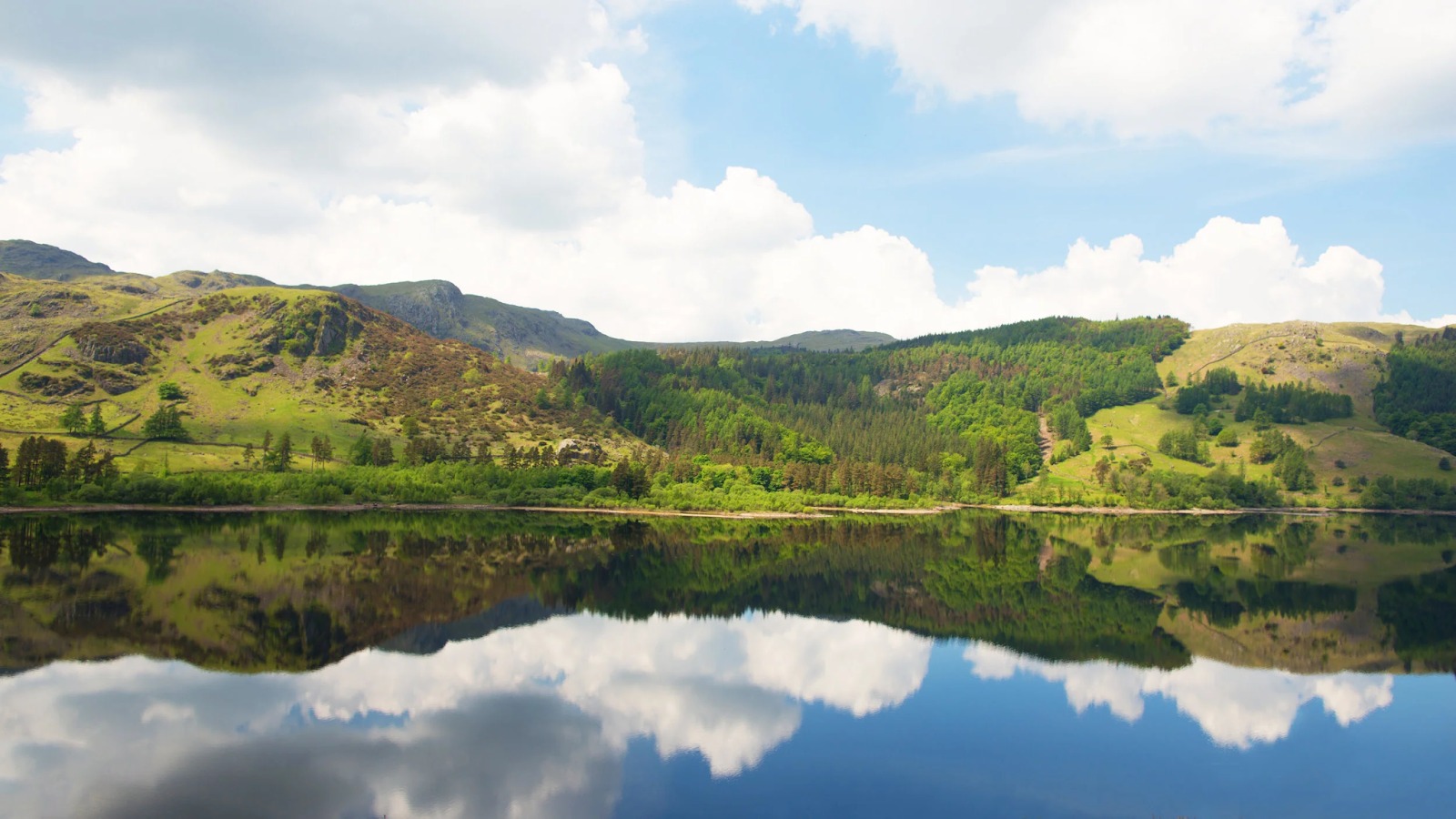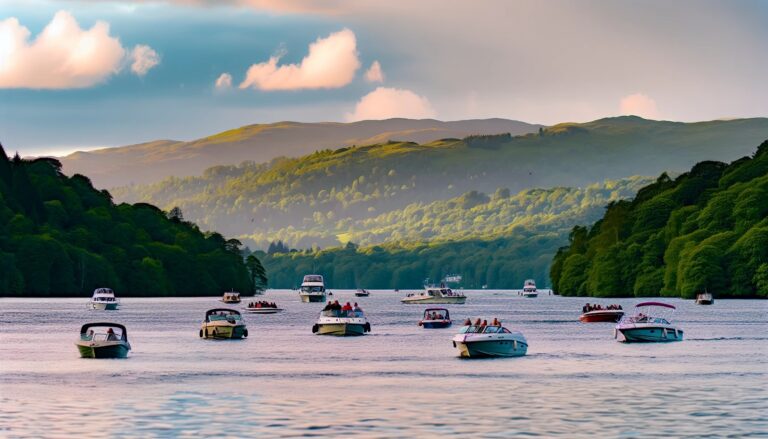Exploring Windermere: A Comprehensive Guide
Introduction
There are few places in England that capture timeless beauty quite like Windermere.
Nestled in the heart of the Lake District, it is a haven of shimmering water, rugged peaks, and poetic history. The lake’s calm surface mirrors centuries of human wonder — from prehistoric settlers to Victorian travelers who came seeking peace, art, and inspiration.
Winder mere is not just a location; it’s a living landscape.
Its story is one of transformation — from glacial origins to a vibrant cultural and ecological treasure. The following journey explores how Windermere became the soul of the Lake District: a place where nature, poetry, and heritage blend in perfect harmony.
The Geological Origins of the Lake District
Millions of years before the first human footsteps touched its shores, the Lake District was carved by natural forces. During the last Ice Age, vast glaciers cut deep valleys into the Cumbrian rock, leaving behind:
- Long ribbon lakes, such as Windermere, shaped by retreating ice
- Sharp ridges and high peaks, formed by ancient volcanic rock
- Fertile valleys and tarns, that gave rise to early communities
The abundance of slate, granite, and volcanic rock later defined the region’s architecture.
Stone cottages, slate roofs, and drystone walls became the signature of Lakeland identity — buildings that seem to grow from the earth itself.
Early Settlement and Prehistoric Heritage
Archaeological discoveries reveal that people have lived around the Lake District for more than 5,000 years. Early communities settled here for access to water, stone, and natural shelter.
- Langdale axe factories produced polished stone tools traded across Britain.
- Stone circles and burial mounds show evidence of ritual and spiritual life.
- The fertile lowlands around Windermere supported early farming.
For these early inhabitants, the lakes were sacred.
The mountains were not obstacles but protectors — symbols of endurance and reverence. Windermere’s story begins with these people who saw nature as their greatest ally.
Medieval Lakeland Life
By the Middle Ages, the Lake District had evolved into a network of small farming villages.
Life was simple but deeply connected to the land. Shepherds grazed sheep on open fells, and wool became the cornerstone of local trade.
A striking symbol of this era is Townend House in Troutbeck — a 15th–16th century farmhouse built of solid Lakeland stone.
It represents:
- The strength and skill of medieval craftsmanship
- The continuity of family farming traditions
- The use of local materials that harmonized with the natural environment
Even today, Townend stands as a proud relic of Lakeland heritage — proof that architecture, like culture, can endure for centuries when built on respect for the land.
The Industrial Age: Transformation and Opportunity
The Canal Connections (18th Century)
The 1700s brought industrial change. Though the Lake District remained rural, canals were built to connect it with England’s growing industrial towns. These waterways:
- Made it easier to transport coal, slate, and timber
- Allowed goods from the Lakes to reach wider markets
- Opened the region to travelers and merchants
Trade expanded, but nature’s grandeur still ruled the landscape.
The Railway Revolution (19th Century)
Everything changed in 1840, when the railway reached Kendal, and by 1847, Windermere itself.
For the first time, city dwellers could journey from London to the Lakes in a single day.
This was the birth of modern tourism.
Hotels, inns, and local guides appeared to welcome travelers eager to experience the landscapes immortalized by poets and painters. Wealthy families built villas overlooking the lake, seeking retreat from industrial life.
The railway not only transformed Windermere into a tourist haven — it sparked a national love affair with the countryside.
Local Enterprise and Industry
While tourism flourished, local industry thrived too.
The Stott Park Bobbin Mill, near Newby Bridge, became a hub of innovation. At its height, it produced half of all the world’s textile bobbins, powered by steam and water.
Mining also expanded in surrounding areas, exporting iron ore and steel via the new rail lines.
Yet, unlike other industrial regions, the Lake District maintained its balance between progress and preservation — a harmony that defines it to this day.
The Romantic Movement and Wordsworth’s Influence
William Wordsworth: Poet of the Lakes
Born in 1770 in Cockermouth, William Wordsworth became the voice of the Lake District.
His poetry celebrated the sacred bond between people and nature, turning the landscape into a source of spiritual renewal.
In 1810, Wordsworth published Guide to the Lakes — part travel book, part philosophy.
He urged visitors not just to see the scenery but to feel it, to experience what he called “the sublime.”
“Come forth into the light of things, let nature be your teacher.” — Wordsworth
This guide forever changed the way people viewed the Lake District.
Tourists began arriving in carriages, clutching his book, searching for the beauty he described. Windermere became not just a lake but a symbol of the English soul.
The Legacy of Romanticism
Wordsworth’s ideals inspired other poets, painters, and naturalists.
He also advocated that the Lake District should become “a sort of national property” — a revolutionary concept that later influenced the founding of the National Trust.
The Romantic era gave birth to environmental appreciation.
Through Wordsworth’s eyes, Windermere became a living museum of feeling, art, and reverence — a landscape where beauty could heal the human spirit.
Beatrix Potter and the Preservation of Paradise
A century after Wordsworth, another visionary would leave an indelible mark — Beatrix Potter.
Though born in London, Potter fell in love with the Lake District during her childhood holidays. In 1905, she purchased Hill Top Farm in Near Sawrey, where she wrote her beloved stories such as The Tale of Peter Rabbit.
Her contributions went beyond literature:
- She bought and protected vast areas of farmland from development.
- She worked closely with local farmers to preserve traditional agriculture.
- She became a key figure in the National Trust, donating thousands of acres of land upon her death.
Beatrix Potter turned imagination into preservation.
Her legacy ensures that the hills, woods, and cottages that inspired her tales remain as vivid today as they were a century ago.
The Victorian Era: Mansions, Steamers, and Leisure
As the 19th century progressed, the Lake District became a playground for the Victorian elite.
Steam-powered boats glided across the lakes, and grand mansions rose along the shores of Windermere and Ambleside.
These estates reflected:
- The prosperity of the Industrial Revolution
- The desire for rural escape among the wealthy
- The growing popularity of leisure travel
Even as luxury expanded, the region retained its authenticity.
Unlike seaside resorts, Windermere’s beauty remained understated — a tranquil balance between refinement and wildness. It was, and still is, a retreat for both the heart and the imagination.
Famous Residents and Visitors
William Wordsworth
- Poet, conservationist, visionary.
- Advocated for preservation of the Lake District.
- His home, Dove Cottage, now welcomes thousands of visitors each year.
Beatrix Potter
- Author, artist, and pioneer conservationist.
- Protected farmland and wildlife for future generations.
- Her work continues to inspire nature lovers worldwide.
The Royal Family
- Regular visitors throughout history — from Queen Victoria to King Charles.
- Their presence underscores the national importance of the Lake District as a heritage treasure.
Windermere in the Modern Era
UNESCO World Heritage Recognition (2017)
In 2017, the Lake District was officially declared a UNESCO World Heritage Site.
This honor recognizes not only its natural grandeur but also its deep cultural impact — a landscape that shaped art, literature, and environmental values across the world.
The designation celebrates three key qualities:
- Natural beauty — dramatic mountains, lakes, and woodlands.
- Cultural continuity — centuries of farming, art, and settlement.
- Global influence — inspiring poets, conservationists, and visitors alike.
Tourism and Economy
Today, more than 15 million visitors travel to the Lake District each year.
Windermere remains its beating heart — a starting point for boat cruises, hiking trails, and cultural excursions.
Visitors can enjoy:
- Scenic boat rides across the lake
- Walks through Bowness and Ambleside
- Visits to Wordsworth’s and Potter’s homes
- Fine dining and local artisan markets
Despite this popularity, the area retains a sense of peace. Tourism is carefully managed to protect both environment and community — a balance few destinations achieve.
Windermere Marina Village: Tradition Meets Luxury
One of the finest examples of modern design rooted in local tradition is Windermere Marina Village.
Built using authentic Lakeland materials, it reflects the perfect blend of comfort and heritage.
The accommodations offer:
- Stunning lakeside views
- Self-catered luxury apartments
- Architectural harmony with the natural landscape
It is a symbol of how modern tourism can honor ancient beauty.
Conservation and Sustainable Future
Preserving Windermere’s magic is an ongoing commitment.
Organizations such as the National Trust, local councils, and environmental groups work tirelessly to protect the fragile ecosystems of the region.
Key initiatives include:
- Sustainable farming to maintain biodiversity
- Trail restoration and erosion control
- Wildlife conservation for native species
- Community-led eco projects to reduce carbon footprints
Sustainability is not just a policy here — it’s a way of life.
Each visitor, farmer, and resident becomes part of the effort to keep the Lake District pristine.
Key Historical Milestones
| Period | Event | Significance |
| ~3000 BCE | Early settlers create stone tools | Marks beginning of human presence |
| 1500s | Townend House constructed | Early example of Lakeland architecture |
| 1810 | Guide to the Lakes published | Sparks Romantic tourism |
| 1847 | Railway reaches Windermere | Birth of modern tourism |
| 1905 | Beatrix Potter moves to the Lakes | Begins major conservation movement |
| 2017 | UNESCO Heritage recognition | Global acknowledgment of its value |
Notable Figures
| Name | Role | Legacy |
| William Wordsworth | Poet | Pioneered appreciation of nature |
| Beatrix Potter | Author & Conservationist | Protected vast lands through National Trust |
| Royal Family | Patrons | Sustained cultural and heritage recognition |
Windermere’s Enduring Legacy
Windermere’s story is not just one of geography — it’s a narrative of emotion, resilience, and art.
Every path, every ripple of water, carries echoes of the past:
- Ancient settlers carving stone tools
- Poets seeking divine beauty
- Farmers and conservationists preserving the land
Its charm lies in balance — between progress and preservation, solitude and celebration. Windermere remains both a retreat for the weary and a muse for the inspired.
Conclusion
Windermere is a mirror of England’s soul — a landscape where nature and humanity coexist in harmony.
Its beauty has endured through ages, its spirit preserved by those who loved it most: Wordsworth with his pen, Potter with her paintbrush, and generations of locals who call it home.
Here, time flows as gently as the lake itself.
Whether you visit for reflection, inspiration, or discovery, Windermere offers something eternal — a reminder that true beauty does not fade; it simply deepens with every passing year.






